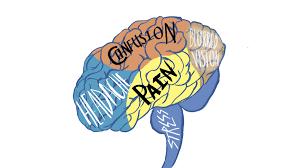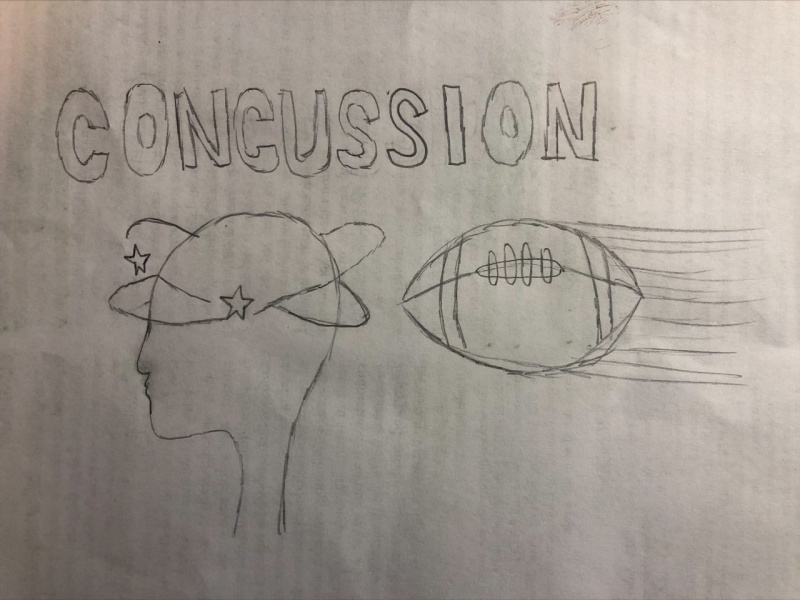Rest, Rest, and More Rest
Physical and mental rest are the primary recovery recommendations for those suffering from a concussion. Cognitive and physical rest
 should include the avoidance of:
should include the avoidance of:
- Screen time
- Reading
- Watching television
- Listening to loud music
- Any physical activity
It is shown that the majority of activities one should limit are primarily ones that involve cognitive function and stress. This is due to the energy crisis the brain undergoes when experiencing such trauma as a concussion. When the brain experiences trauma, it begins rapid attempts at restoring balance, or homeostasis. While doing this, ATP (energy) becomes depleted in efforts to recover. This energy depletion creates a slew of issues regarding signaling, neurotransmitters, etc. that may be mitigated via cognitive rest (Giza and Hovda, 2014). Although, it is not recommended that one rest during their entire recovery process (as in lying in bed in a dark room for multiple days). There have been cases in which such rest has shown to be detrimental to one’s recovery process. Complete rest, in which one avoids all stimuli, may instigate further rumination on one’s injury, creating depressive or anxious symptoms. Also, studies have shown that those prescribed with 5 days of rest experienced worsened post-concussive symptoms than those only prescribed 2 days of rest. So, although rest is necessary, it is only useful in moderation.
Pharmacological Intervention
Medication currently used to treat concussion are primarily intended to relieve concussive symptoms an individual is experiencing at that time. There are no FDA-approved medications for the treatment of concussion. Although, there are many pharmacological options one may pursue to lessen symptoms. The primary headache relievers include acetaminophen and NSAIDs, and amitriptyline and nortriptyline. The former pain relievers have actually been shown to be overused in those with concussions, and have the possibility of worsening symptoms. The latter medications are tricyclic antidepressants that may be used for migraines. They have been shown to relieve headache symptoms in pediatric concussions. Stimulants, such as amantadine and methylphenidate, may both be used to mitigate cognitive fatigue. Amantadine is a dopamine agonist that may theoretically improve brain functioning, while methylphenidate has been shown to improve cognition and mental fatigue after TBI in adults. In order to improve sleep in those with concussions, melatonin and trazodone are both recommended sleep aids. Trazodone is a serotonin antagonist often used for insomnia. Lastly, hypertonic saline may be used in severe TBI to reduce intracranial pressure. Also intravenous migraine therapy, such as metoclopramide or prochlorperazine, have been shown to significantly reduce pain in 93% of patients (Halstead, 2016).

Avoidance of Subsequent Re-Injury
The primary action one can take to ensure full recovery from a concussion is avoidance of a repeat concussion. This is especially important considering that it has been shown individuals are more susceptible to secondary injury following a primary TBI. This risk for subsequent injury is highest within the first 10 days of the initial trauma. This is likely to biological vulnerability from the ongoing energy crisis in the brain, as discussed previously. Magnetic resonance spectroscopy has displayed that reductions in a specific metabolite, NAA, took 15 days longer to return to normal levels in those with a repeat concussion, versus those with only a primary injury. Studies have also shown that repeat mild TBI may result in white matter damage in the brain, as well as cognitive impairments. If one experiences a second concussion before full recovery from the initial one, it is likely that their symptoms will worsen and last much longer. Although, if one experiences a repeat concussion after full recovery, it has been seen that these act like two, separate injuries (Giza and Hovda, 2014).
References
Giza CC, Hovda DA. The New Neurometabolic Cascade of Concussion. Neurosurgery. 2014; 75. doi:10.1227/neu.0000000000000505
Halstead ME. Pharmacologic Therapies for Pediatric Concussions. Sports Health: A Multidisciplinary Approach. 2016; 8(1):50–52. doi:10.1177/1941738115622158
